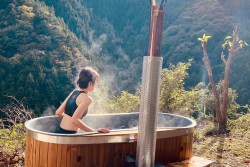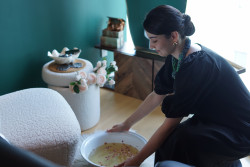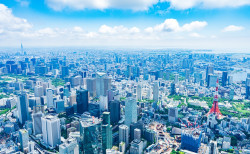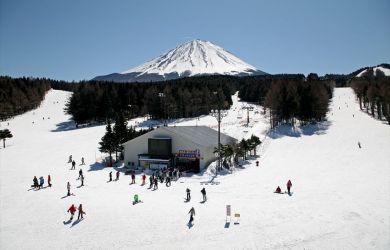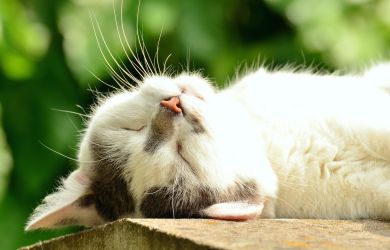
Originally published on metropolis.co.jp on July 2011

The big ukiyo-e exhibition this year has been the Toshusai Sharaku show at the Tokyo National Museum. Despite all the effort put into that comprehensive show, I have to confess that much more to my taste—and I suspect yours—is the exhibition at the Ota Memorial Museum of Art that looks at the work of another ukiyo-e legend, Utagawa Kuniyoshi.
While Sharaku is a historical cipher who largely limited himself to offbeat prints of kabuki actors in a short ten-month career, Kuniyoshi (1798-1861) was a manically creative genius who took the art of woodblock printing on one of its wildest rides during his five-decade career. If you don’t already have a favorite ukiyo-e artist, then this is the perfect choice. Although just as talented as his great contemporary, Katsushika Hokusai, he is less famous, so citing him sounds cooler.
As is often the case at the Ota, the show is divided into two halves, with two entirely different sets of prints—something to do with the largeness of their collection and the relative smallness of the venue. The first half of the exhibition (which featured Kuniyoshi’s prints of warriors, actors, and the supernatural) is already finished, but the themes in the second half are just as interesting: caricatures, trick pictures, portraits of beauties, and prints showing the influence of Western art that was seeping in as a precursor to the political changes at the end of the Edo period.
One of the keys to understanding the artist’s polymorphous creativity was the way he responded to the strict censorship of the times. Occasionally during the Edo period, the government worried about public morals and introduced legislation to clamp down on the “floating world” of actors and prostitutes. In 1842, following the imposition of the Tempo Reforms, ukiyo-e artists, who made most of their money depicting famous actors and renowned beauties, were told that these themes were now off-limits.
Kuniyoshi got round the restrictions by substituting animals for humans in many of his prints. “Fish with Actors’ Expressions” (ca. 1842-44) shows a number of actors caricatured as various forms of sea life, while “The Yoshiwara Sparrows’ Temporary Nest” (1846) shows the denizens of Tokyo’s pleasure quarters in bird form. In yet another ruse to get round the censors, “Scribbles on a Storehouse Wall” (1847-8) purports to reproduce roughly drawn graffiti, but actually shows recognizable pictures of the famous actors of the day.
Although it was government regulation that helped to spur these inventive works, Kuniyoshi’s own restless creativity took over, pushing him to create all manner of eccentric masterpieces.
The exhibition includes several pictures in which single human figures are skillfully built up from lots of tiny people clustered together. Another series of works show misleading silhouettes. What initially appears to be the outline of a lobster proves to be a fisherman with two fishing rods tangled up in some weeds.
Later pictures show a slackening of the Tempo laws, with the artist returning to pictures of beautiful women. In these, there is often some ‘prop’—like a child, domestic chore, or literary allusion—so that accusations of glamorizing courtesans can be denied. The final section of the exhibition looks at the impact of Western art, with Dutch etchings set alongside the Kuniyoshi prints they influenced.
Through Kuniyoshi’s art we get a lively picture of late Edo Japan: a vibrant society in which irrepressible popular culture vied with authority, while foreign pressures made themselves increasingly felt.
Utagawa Kuniyoshi: Unparalleled Ukiyo-e Artist runs until July 28, see exhibition listings (Harajuku/Aoyama) for details.

